STUDENTS PROJECTS
PROJECTS2015
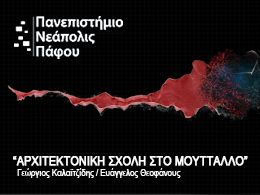
11 December, 2015
School of Architecture Mouttallos
This project aims to find a methodology for the creation of contemporary architecture within an existing traditional settlement.
Students : George Kalaitzides, Evangelos Theofanous
Tutors: Ms. Evanthia Dova, Dr. Giorgos Artopoulos
Neapolis University Pafos
Presentation date : 2015
This project aims to find a methodology for the creation of contemporary architecture within an existing traditional settlement. Key component is everything new to emerge from the existing structures, change according to its needs and transform the old, forming an organic relationship between them.
As a settlement example was chosen the area of Moutallo's in the city of Paphos and in which the construction of an architectural school is been proposed. Moutallo's was the Turkish Cypriot city district and has a long history that starts from the conquest of Cyprus by the Ottomans in 1951 AD. Through a turbulent history culminated by the Turkish invasion in 1974, was abandoned by the Turkish Cypriots and was finally inhabited by Greek Cypriot refugees.
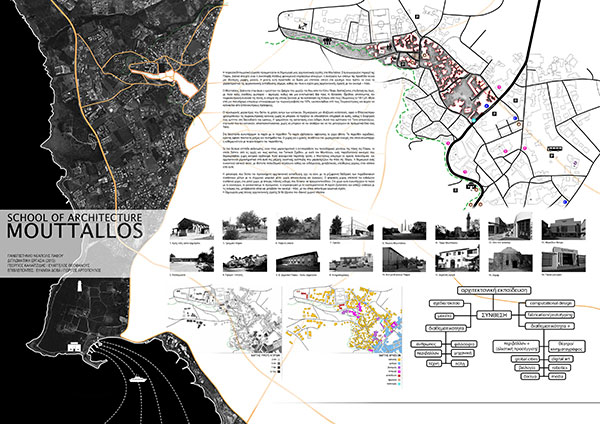
In the district of Moutallo's the old meets the new. The present evolves, leaving space intact. The past has left its marks everywhere. Time and space compose a space-time continuum in which the everyday life coexists with the ghosts of the past.
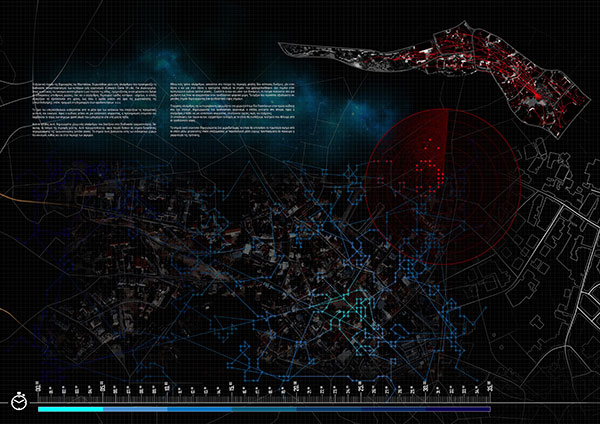
The proposed architectural education philosophy lies on the interaction of traditional synthetic means with digital means without any reservations. As the digital space becomes an intermediate synthetic space with unlimited possible versions that can be executed, the old meets the new and the imagination goes along with reality. The school evolves and changes according to its needs but simultaneously it evolves the settlement.
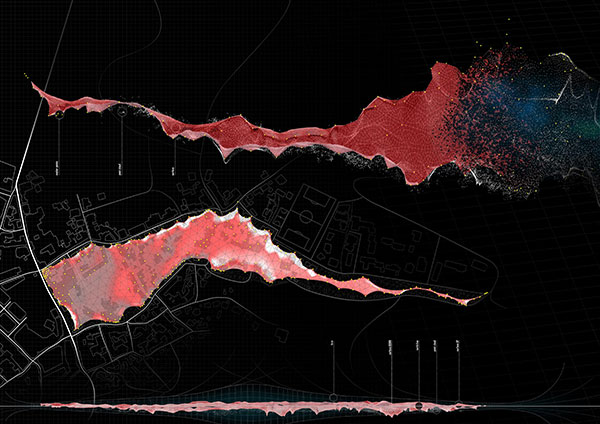
Moutallo's evolving process was investigated through an algorithm that simulates the cell proliferation. Specifically, as the houses of the settlement developed next to each other creating united street fronts and in-between outdoor spaces, the algorithm creates groups of cell/points that continue to evolve through time until the group finally reaches its full capacity. When this happens the algorithm moves on to creating new groupings. The overcrowding limit is been determined by the average number of actual houses that exist in the settlement. After the code reaches a balance stage, the simulation stops and produces a 2d point cloud.
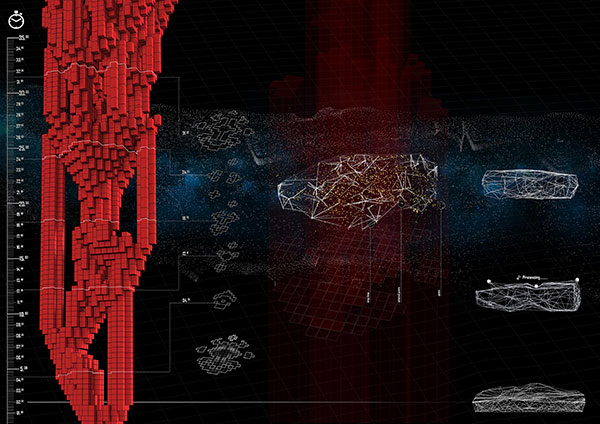
Throughout this and due to an algorithm that is based on the Delaunay triangulation process, a site mess is created. For this to take place the emitter points must be given. These are found in the intermediate settlement spaces and in the cliff area.
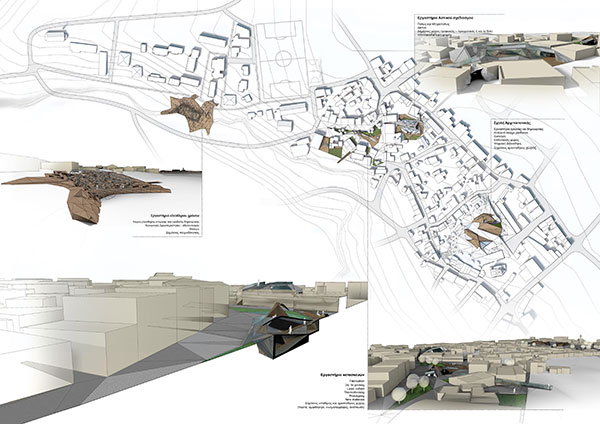
Through a third algorithm, two equal forces are implicated in the under field study - one upon the x axis and the other on y axis - keeping the points that were used in the previous code fixed as anchor points. Due to this, the mess is stretching like a membrane until it balances in the three-dimensional digital space. Its upcoming form dematerializes into countless points shaping a 3d point cloud.

The initial algorithm is implemented now to the three- dimensional selected space, forming an organization that extends to the infinity. Once the algorithm reaches a state of equilibrium, randomly shaped sections are selected. The sections overlaps creates a vessel, in which the chosen points will be gathered and connected creating a spaceframe.
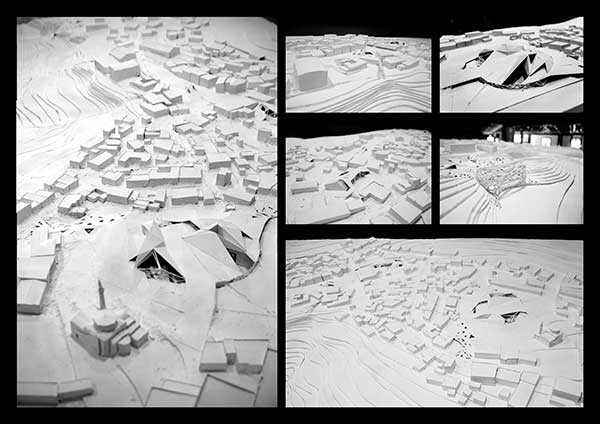
This consists the initial shape that will be processed through traditionally means (mainly paper models) and will provide the proposed form.










